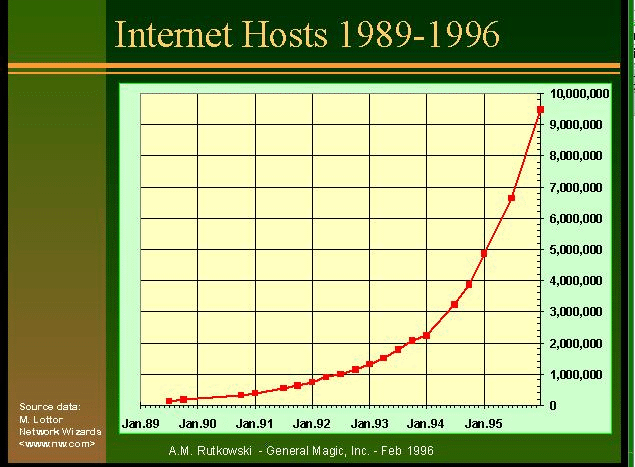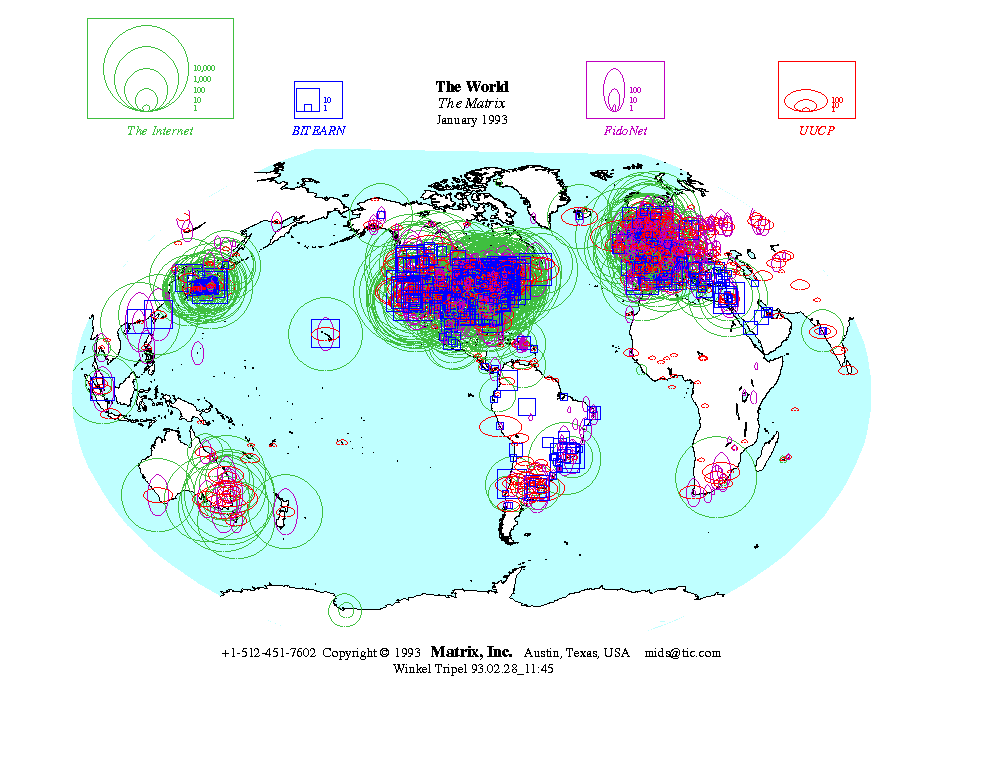
Digital Research in the Humanities: Community, Collaboration, and Intellectual Technologies
Principles
- Computers are, in principle, no less well suited to the purposes of humanists than to the purposes of scientists.
- Networks are more important than computers, people are more important than networks.
- In communication, bandwidth is often critical: Face-to-face communication is still the highest bandwidth available.
- On the other hand, for some purposes, low-bandwidth communication may actually be preferable.
- The chance encounter is a critical element of research and discovery. Physical space and other real-time systems promote such encounters (even more effectively than bad search tools).
- The major change wrought by the internet in the academic disciplines of the humanities will, I think, be the shift from individual and cooperative work to collaborative work.
Community

Is a community simply "Lots of people?"
Networks that work are communities of interest
Communities are formed by a combination of social and material forces
It's possible (but not inevitable) that technological change will reorganize communities (e.g., the highway system, the telephone)
Although we talk a lot about virtual communities these days, communities still function best when they share a physical location.
Collaboration

"An intricate web or wires that cuddle the planet" (Day et al., "Creating a Virtual Academic Community" in Harrison and Stephen)
Historically, most humanities research has not been collaborative (the exceptions: edited collections, festschrift, and reference works)
Historically, most humanities research has been cooperative.
Collaborative Research: "a group of researchers with various backgrounds and interests...jointly identify a common research theme or scientific problem, and carry out coordinated actions in order to create new knowledge in relation to the research question" (Sanderson, "Cooperative and Collaborative Research" in Harrison and Stephen)
Cooperative Research: "an individual or group provides another with useful information or data, although little other discussion is held in relation to the data" (Sanderson, ibid.)
For either kind of research, standards are a critical issue--data and communication standards, as well as intellectual standards
The presence of tools for collaboration is not enough to make people use those tools: they have to be motivated, and the tools have to be the best available for the purpose. Sanderson describes the installation of a video-conferencing system for a research group in Atmospheric Physics: "There was initial enthusiasm for the project, and several researchers indicated interest in using the system.... However, a few months after these tests, none of the sites had yet used the system to conduct any work-oriented discussions." On the other hand, they used email extensively.
If the internet does produce a shift in humanities research from cooperative to collaborative work, it will be because the problems you can tackle with the computer are larger and more complex, and because tackling them often requires you to cooperate in substantial and coordinated ways with people who know things you don't.
Intellectual Technologies: Examples in Practice
Most work is still single-author
Most work is still linear (rather than hypertextual)
Most work still uses image data only as illustration (but there are exceptions)
Participation is very high, both for readers and reviewers
Authors receive more feedback
Audience is unusually heterogeneous
IATH
Tools: MU and Inote. NB: these tools are project-driven.
Networked Associate Fellows
The Blake Project
The Valley of the Shadow
The Rossetti Archive
MU*s
Not all MU*s are alike
MU*s are highly configurable environments
Communication in large groups is difficult, but can be made feasible
Social issues are foregrounded and personality is hypertrophied
Play shades into work and vice-versa, in interesting ways
Teaching
Courses need to be redesigned to make the best use of this medium
The most important adjustment: collaborative work
Class meetings are still critically important, but MU* and email and the Web make valuable supplements
There is a potential for student work to have, and therefore to imagine, an audience well beyond the classroom
Resources
Alan Liu, Voice of the Shuttle
Diane Kovacs, et al., Directory of Scholarly and Professional E-Conferences
New Horizons in Scholarly Communication (Librarians Association of the University of California)
The Scholarly Societies Project
Robin Cover, SGML: Academic Projects
Teresa M. Harrison and Timothy Stephen, eds. Computer Networking and Scholarly Communication in the Twenty-First Century (Albany, NY: SUNY UP, 1996)
Jennifer Hoyt, IATH Related Readings
Todd Blaylone, Chorus: Reviews and Resources for Computing in the Humanities
Paul Groves, The HUMBUL Gateway (Oxford University)
WWW Virtual Library: Humanities
Altavista
 IATH WWW Server
IATH WWW Server
Copyright 1996 by John Unsworth, all rights reserved
Document URL: http://www3.isrl.uiuc.edu
Last Modified:




 IATH WWW Server
IATH WWW Server